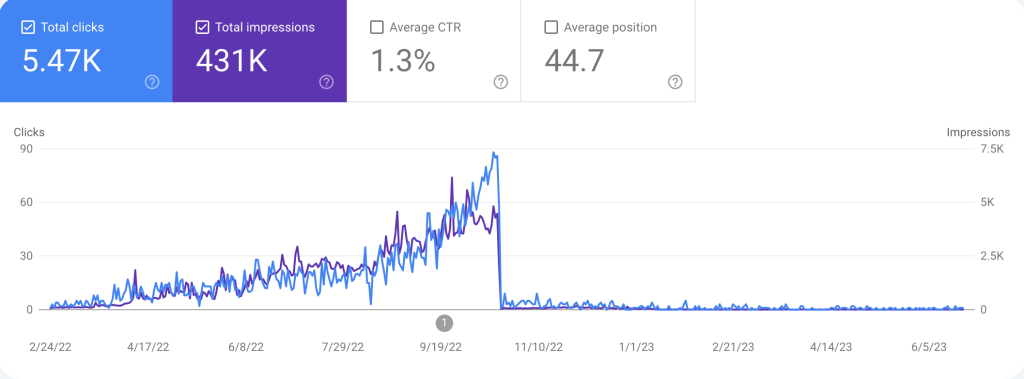In terms of search engine optimization (SEO), there are various factors that can affect a website’s ranking and visibility on search engine result pages (SERPs). One such factor that has been the subject of much discussion and speculation is the “Google Sandbox.” here we know what the Google Sandbox is, its impact on new websites, and how webmasters and SEO professionals can navigate through this to achieve better rankings and organic traffic.
What is Google Sandbox in SEO?
Google Sandbox refers to a concept or theory that suggests new websites may experience a period of probation or restriction in their ranking potential and visibility on Google’s SERPs. It is believed that Google implements this sandbox mechanism to prevent spammy or low-quality websites from achieving immediate success and artificially manipulating search engine rankings.
How Does the Google Sandbox Work?
The exact workings of the Google Sandbox are not explicitly disclosed by Google, but industry experts and SEO professionals have observed certain patterns and phenomena that point toward its existence. It effect typically manifests as a temporary decline in organic rankings and traffic for new websites, making it difficult for them to achieve high visibility in search results, especially for competitive keywords.
What Are The Sandbox Period?
The sandbox period can vary in duration, typically ranging from a few weeks to several months. During this time, the new website’s rankings may hover around the lower pages of search results, making it challenging to attract organic traffic. This phenomenon can be frustrating for website owners and SEO practitioners who expect immediate results from their optimization efforts.
Google’s Trust-Building Process
The Google Sandbox is thought to be part of Google’s trust-building process for new websites. It allows Google to evaluate and assess the credibility, quality, and relevance of a website before granting it higher visibility on SERPs. This process helps filter out spammy or low-quality websites, ensuring that only those websites providing value to users are rewarded with prominent rankings.
Factors Influencing the Sandbox Effect
Several factors may influence the extent and duration of the sandbox effect on a new website. These factors include the Website’s domain age, the quality and relevance of its content, the natural growth of backlinks, user engagement metrics, and overall website authority. It is crucial for webmasters and SEO professionals to understand and optimize these factors to mitigate the impact of the Google Sandbox.
Strategies to Overcome the Google Sandbox
While the Google Sandbox can be a challenge for new websites, there are strategies and best practices that can help mitigate its impact and expedite the process of achieving better rankings. Let’s explore some effective approaches to overcome the sandbox effect.

1. Focus on High-Quality Content
Content is king and if your content attracts visitors then you do not need to do any kind of SEO things. Content is the cornerstone of any successful SEO strategy. By creating high-quality, informative, and engaging content, you can demonstrate to Google that your website provides value to users. Ensure that your content is well-researched, unique, and optimized for relevant keywords to improve your website’s chances of breaking free from the sandbox.
2. Natural Link Building
Instead of resorting to spammy or manipulative link-building techniques, focus on building high-quality backlinks naturally over time. Encourage organic link growth by creating valuable content that others would naturally want to link to. Engage with your target audience and industry influencers to foster relationships that can lead to organic backlinks. Natural Link Building is the best way to increase your ranking in SERPs.
3. Consistent and Natural Growth
Google values websites that grow organically over time. Instead of trying to expedite your website’s growth through aggressive SEO tactics, focus on steady and natural growth. This includes gradually increasing the frequency of content updates, attracting genuine user engagement, and building a solid online presence through social media and other marketing channels.
4. Technical SEO Optimization
Ensure that your website is technically optimized for search engines. Pay attention to factors such as page load speed, mobile-friendliness, Crawlability, and website structure. Optimizing these technical aspects can enhance user experience and improve your website’s chances of breaking free from the sandbox.
5. Social Media Engagement
Active participation on social media platforms can help establish your website’s credibility and authority. Engage with your audience, share valuable content, and build a strong social media following. This can contribute to increased brand awareness, organic traffic, and improved search engine rankings. If you are working properly on Your social media channels regularly then you have a chance to get more visitors to your website and get a higher ranking on any search engine.
6. Patience and Persistence
It requires patience and persistence. Understand that the sandbox effect is a temporary setback and keep focusing on providing value to your target audience. Stay consistent with your SEO efforts, continually optimize your website, and leverage other digital marketing strategies to grow your online presence.
FAQs About Google Sandbox
The duration of the Google Sandbox period can vary significantly, ranging from a few weeks to several months. it is important to note that there is no fixed timeframe, and the sandbox effect may differ for each website. If we are talking about the time then it will take an estimated 6 to 8 Months, after that your website gets a ranking easily.
The Google Sandbox is primarily associated with new websites. Established websites with a strong online presence and a history of quality content and natural backlink growth are less likely to be significantly impacted by the sandbox effect.
Tracking the exact presence of the Google Sandbox can be challenging since Google does not explicitly disclose whether a website is in the sandbox or not. However, if you notice a sudden drop in rankings and organic traffic soon after launching a new website, it could indicate the presence of the sandbox effect.
No, there are no guaranteed shortcuts to bypass the Google Sandbox. It is important to follow ethical SEO practices, focus on providing value to users, and gradually build your website’s credibility and authority over time.
Aggressive SEO strategies, such as spammy link-building or keyword stuffing, are not recommended and may have a negative impact on your website’s long-term rankings. It is best to focus on ethical SEO practices and strategies that align with Google’s guidelines.
No, the Google Sandbox and Google penalties are different concepts. The sandbox effect is a temporary phenomenon that affects new websites, while a Google penalty is a result of violating Google’s guidelines and can have long-term consequences on a website’s rankings and visibility.
Conclusion
The Google Sandbox is a phenomenon that impacts new websites and their ability to achieve immediate visibility and rankings on Google’s SERPs. While the exact workings of the sandbox are not disclosed by Google, it is believed to be part of a trust-building process to filter out low-quality or spammy websites. To overcome the Google Sandbox, website owners and SEO professionals should focus on creating high-quality content, natural link-building, consistent and natural growth, technical SEO optimization, social media engagement, and maintaining patience and persistence.
































































